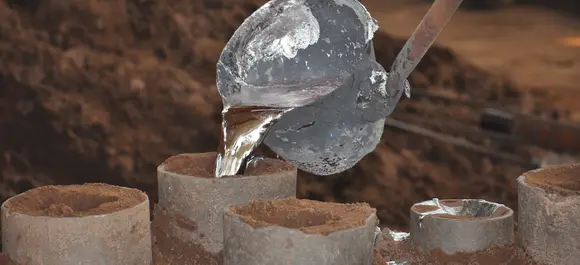Mobile:+86-311-808-126-83
Email:info@ydcastings.com
High-Quality 316 Stainless Steel Castings for Durable and Reliable Applications
The Benefits of Stainless Steel 316 Casting
Stainless steel 316 is regarded as one of the most versatile and durable materials in the metals industry. Known for its exceptional corrosion resistance, it has become a popular choice for various applications, particularly in environments where exposure to harsh chemicals and extreme temperatures is common. When it comes to manufacturing, the casting of stainless steel 316 presents unique advantages that contribute to the production of high-quality components for a wide range of industries.
Composition and Properties
Stainless steel 316 belongs to the austenitic family of stainless steels. Its unique composition includes approximately 16% chromium, 10% nickel, and 2% molybdenum. The addition of molybdenum enhances its resistance to pitting and crevice corrosion, especially in chloride-rich environments, making it an ideal material for marine applications and chemical processing.
The properties of stainless steel 316 make it particularly advantageous for casting. It boasts excellent weldability, formability, and the ability to be fabricated in various shapes. The high tensile strength and ductility allow it to withstand stress without compromising integrity, making it a reliable choice for critical components.
Casting Process
The casting process for stainless steel 316 typically involves several key steps, including melting, pouring, solidification, and finishing. The process begins by melting the alloy in a high-temperature furnace, typically around 1,600 degrees Celsius. Once melted, the liquid metal is poured into molds designed to shape the final product. The casting is then allowed to cool and solidify, taking the shape of the mold.
Once the cast pieces have cooled, they undergo a finishing process that may include grinding, polishing, or machining to achieve the desired dimensions and surface finish. This flexibility in shaping allows manufacturers to produce complex geometries that would be difficult or impossible to achieve using traditional machining methods.
Applications
Stainless steel 316 castings find applications across various industries due to their unique properties. In the marine industry, components such as pumps, valves, and fittings made from 316 stainless steel are standard, as they resist corrosion from seawater. Similarly, in the pharmaceutical and food processing industries, stainless steel 316 is essential for equipment that requires cleaning and sanitation, thanks to its non-reactive surface and resistance to bacteria buildup.
stainless steel 316 casting

Additionally, the chemical processing industry benefits significantly from stainless steel 316 casting. It is used in the manufacturing of storage tanks, pressure vessels, and reactors that handle aggressive chemicals, ensuring safety and longevity of the equipment. The versatile nature of stainless steel 316 allows it to be tailored specifically to meet the demanding requirements of these applications.
Advantages of Stainless Steel 316 Casting
1. Corrosion Resistance The high levels of chromium and molybdenum provide excellent resistance against corrosion in various environments.
2. Strength and Durability Stainless steel 316 offers high tensile strength and the ability to withstand extreme conditions, making it suitable for critical applications.
3. Versatility The casting process allows for the production of intricate designs and complex shapes, catering to specific industrial needs.
4. Longevity Components made from stainless steel 316 tend to have a longer service life due to their resistance to wear and tear, leading to lower maintenance costs.
5. Environmental Friendliness Stainless steel is fully recyclable, contributing to sustainability in manufacturing.
Conclusion
In summary, stainless steel 316 casting is a vital process that yields high-quality, durable components suitable for diverse industrial applications. Its unique combination of corrosion resistance, strength, and versatility makes it a preferred material in sectors ranging from marine to chemical processing, ensuring reliability and longevity in the components produced. As industries continue to evolve and demand more resilient materials, stainless steel 316 casting will undoubtedly play a crucial role in meeting these challenges.
-
Why Should You Invest in Superior Pump Castings for Your Equipment?NewsJun.09,2025
-
Unlock Performance Potential with Stainless Impellers and Aluminum End CapsNewsJun.09,2025
-
Revolutionize Your Machinery with Superior Cast Iron and Aluminum ComponentsNewsJun.09,2025
-
Revolutionize Fluid Dynamics with Premium Pump ComponentsNewsJun.09,2025
-
Optimizing Industrial Systems with Essential Valve ComponentsNewsJun.09,2025
-
Elevate Grid Efficiency with High-Precision Power CastingsNewsJun.09,2025











